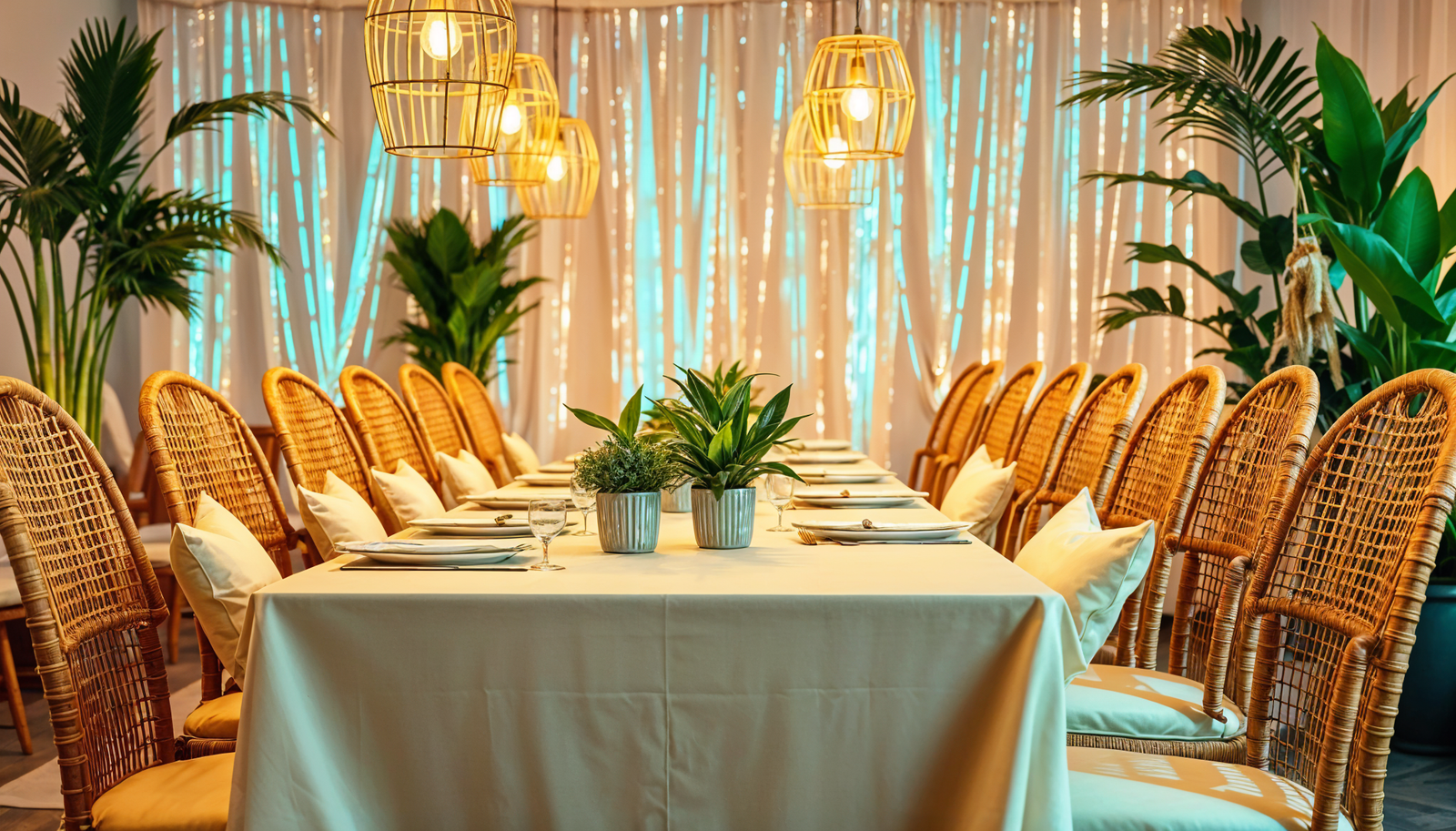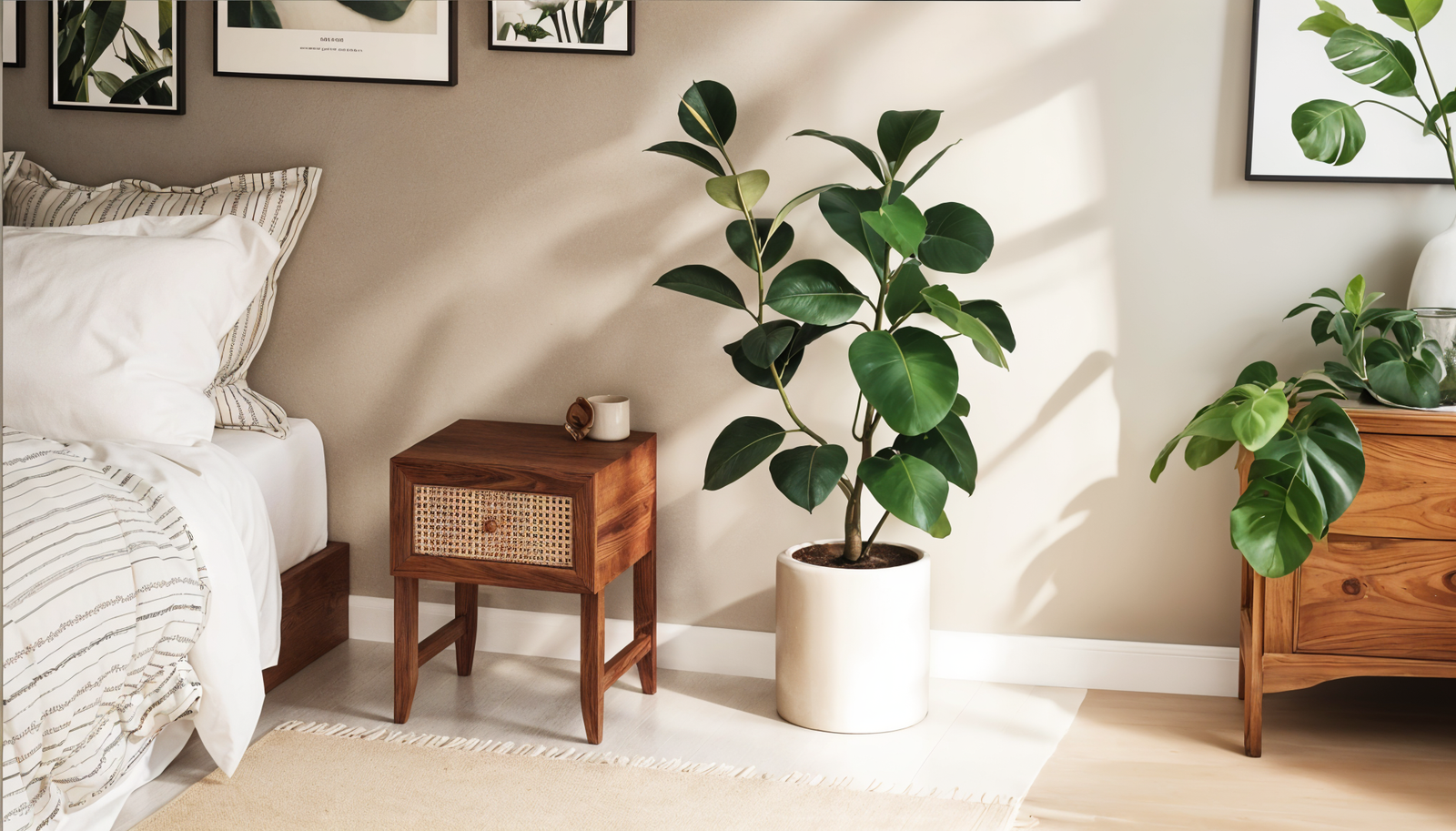🤍 Unmatched Quality, Authentic Craftsmanship
🤍 Unmatched Quality, Authentic Craftsmanship
🤍 Unmatched Quality, Authentic Craftsmanship
In the ever-evolving world of interior design, one trend has truly caught our eye: Japandi. This captivating style seamlessly combines the simplicity and elegance of Japanese design with the cozy, inviting essence of Scandinavian aesthetics.
But what are the characteristics of Japandi style?
At its core, this modern fusion emphasizes calmness, clean lines, and a harmonious relationship with nature, transforming spaces into sanctuaries of serenity. The Scandinavian influence in Japandi introduces warmth and functionality, while Japanese design brings in a sense of tranquility and sophistication.
As we explore the enchanting elements that define Japandi, we'll uncover how this style can be effortlessly integrated into various living spaces, including those curated by unique sources like Mojo Boutique.

Japandi style is a design trend that combines Japanese and Scandinavian styles. It brings together the clean lines of Japanese design and the cozy feel of Scandinavian design. This mix creates a modern, nature-inspired look that many people love.
Blending Japanese and Scandinavian aesthetics has emerged as a captivating design trend known as Japandi interior design. This harmonious fusion combines the minimalist elegance of Scandinavian design with the serene simplicity of Japanese style, creating spaces that are both functional and tranquil.
Central to this aesthetic is the emphasis on natural materials, earthy tones, and clean lines, which together foster a calming atmosphere ideal for modern living. The intention is to purify the environment, allowing for a balance that nurtures both the mind and spirit.
A critical element of Japandi interior design is how it approaches wall decor. Rather than overwhelming spaces with excessive decorations, this style favor subtlety and purpose. A carefully curated selection of artwork or handmade ceramics can bring warmth without cluttering the visual landscape. Natural elements, such as wooden panels or bamboo accents, are commonly used to enhance the organic feel of the decor, allowing the walls to merge seamlessly with the overall design ethos. This thoughtful approach underscores the value of quality over quantity, where each piece tells a story and contributes to the space's tranquility.
The Japandi style comes from Japan and Scandinavia's design traditions. These regions have always had unique design styles. Now, their fusion is loved worldwide for its fresh, modern take on simplicity.
Its popularity grows because it makes spaces both beautiful and practical. It meets the needs of today's homeowners who want simplicity, natural materials, and a peaceful home.

The Japandi design style is known for its clean lines and simple look. It values simplicity over fancy details. This style focuses on elegant, functional shapes and subtle details.
At its heart, Japandi loves the beauty of simplicity. It removes unnecessary items to create a calm, serene space. Each piece is valued for its unique qualities, showing off its true beauty.
The Japandi style brings peace and focus to a space. It lets the eye rest and the mind calm down. By choosing Japandi, homeowners create a peaceful, simple living space.

In recent years, there has been a noticeable shift towards using natural materials and organic textures in home design and decor. This trend not only reflects a growing appreciation for the beauty of the natural world but also promotes sustainability and wellness in our living environments. Materials such as wood, stone, linen, cotton, and bamboo are being celebrated for their tactile qualities and rich histories. By incorporating these elements into our spaces, we create a sense of warmth and comfort, fostering a deeper connection to nature and the environment.
Wooden furniture and flooring are key in Japandi style. They bring elegance and a timeless look. Rattan, a natural fiber, is used in lighting and furniture, adding texture.
Stone, like natural tiles, connects us to nature. It's a big part of Japandi design.
Japandi interiors use earthy color palettes. Beige, taupe, and gray create a calm atmosphere. Green or ochre adds depth and interest.
| Natural Material | Japandi Application |
|---|---|
| Wood | Furniture, paneling, flooring |
| Rattan | Lighting fixtures, chairs, side tables |
| Stone | Tiles, countertops |
The Japandi style is a mix of Japanese and Scandinavian design. It creates a modern, minimalist look. This blend brings out unique features that define Japandi style.
Clean lines and uncluttered spaces are key in Japandi. It focuses on simplicity, letting materials speak for themselves. Japandi spaces feel calm, inviting you to enjoy the details.
Natural materials like wood, rattan, and stone are important in Japandi. They add warmth and texture, blending indoors with outdoors. The colors used are earthy, like beige, gray, and soft greens, making the space soothing.
The Japandi style also values wabi-sabi. It celebrates imperfection and the beauty of aging. This philosophy helps us appreciate the world around us, promoting mindfulness and connection.
Functionality is a big part of Japandi style. Spaces are designed to be practical, with furniture and storage that fit the aesthetic. This creates a beautiful and functional living space.
By combining Scandinavian minimalism with Japanese natural materials and wabi-sabi, Japandi style is unique and timeless. It offers a modern yet enduring design approach.
The Japandi style is rooted in the Japanese wabi-sabi philosophy. It celebrates the beauty of imperfection and the simplicity of life. This philosophy combines Japanese and Scandinavian design, creating a unique aesthetic.
Wabi-sabi teaches us to find joy in the unique flaws of each object and space. It values the natural aging process and the imperfections that add character. This is why Japandi focuses on natural materials and simple designs.
By adopting wabi-sabi, Japandi design encourages us to appreciate the present moment. It invites us to embrace the wabi-sabi aesthetic, the japandi style, and the warm minimalism that nourishes our senses and souls.
The Japandi style offers a refreshing change from today's glossy designs. It teaches us to slow down and appreciate the simple things. By embracing imperfection, Japandi helps us create spaces that are both beautiful and soul-nourishing.
Japandi design is not just beautiful; it's also very practical. Its clean lines and simple style fit well in many rooms. This includes cozy living rooms and peaceful bedrooms.
One big plus of Japandi home decor and furniture is how useful they are. Items like low-profile sofas and simple shelving units are both stylish and practical. They fit well in any room and offer lots of storage.
Japandi style is also very flexible. Its soft colors, natural materials, and simple shapes work with many interior styles. This makes it easy to add Japandi touches to your home, whether in one room or all over.
Looking for a calm, minimalist look or a cozy, welcoming feel? Japandi design can help you get there. It combines Japanese and Scandinavian styles for a modern, beautiful home.
Japandi style draws heavily from Scandinavian design. It combines minimalist principles with a focus on light, airy spaces. This mix makes Japandi interiors both modern and welcoming.
Scandinavian designers are key to Japandi's minimalist roots. They emphasize clean lines, functionality, and simplicity. Japandi spaces avoid clutter, focusing on only the most important pieces.
Japandi interiors aim to be open, bright, and inviting. They use large windows, light colors, and mirrors to enhance natural light. This creates a sense of space and light, defining Japandi style.
By merging Scandinavian minimalism with light-filled spaces, Japandi offers a unique, modern interior style. It appeals to design lovers globally.
The Japandi style deeply connects with nature. It uses natural materials, organic textures, and biophilic design. These elements create a calm, nature-inspired home atmosphere. By adding japandi, natural materials in japandi, organic textures, and biophilic design elements, homes become a mix of outdoor beauty and indoor comfort.
Biophilic design focuses on our need to connect with nature. It uses indoor plants, natural light, and elements to bring the outdoors in. Features like indoor gardens, skylights, or large windows make homes feel harmonious and refreshing.
Embracing japandi creates a peaceful, restorative space. It combines natural materials in japandi, organic textures, and biophilic design elements. This blend makes the indoor-outdoor transition smooth, offering a serene and balanced living space.
Japandi style is a mix of Japanese and Scandinavian design. It brings together the simplicity of Japanese design and the natural feel of Scandinavian design. This creates a unique look for modern homes.
Japandi style is known for clean lines and minimal design. It uses natural materials and organic textures. It's all about simplicity and function, blending Japanese and Scandinavian styles.
Japandi style loves natural materials like wood, rattan, and stone. These add warmth and an organic feel. Earthy colors also help connect the space to nature.
Scandinavian design's minimalist approach and love for light spaces shape Japandi style. This makes Japandi interiors both modern and welcoming.
Japandi style is inspired by wabi-sabi, which values simplicity and imperfection. This is seen in its warm minimalism and organic textures.
Japandi design is both beautiful and practical. Its clean lines and minimalism make it perfect for various spaces. It suits cozy living rooms and calm bedrooms well.
Japandi style connects to nature through natural materials and textures. It also uses indoor plants and natural light. This creates a peaceful, nature-inspired home atmosphere.
In conclusion, the fusion of minimalist Japanese design with Scandinavian aesthetics has given rise to the captivating Japandi style, which beautifully embraces simplicity and functionality. This harmonious blend is characterized by clean lines in Japandi style, creating spaces that convey serenity and purpose. The focus on minimalism not only reduces clutter but also enhances the overall tranquility of a space, making it an ideal choice for those seeking a peaceful retreat within their homes.
The integration of Japandi decor elements further elevates this design approach, as natural materials, muted colors, and timeless craftsmanship come together to create an inviting atmosphere. Essentially, Japandi decor encourages individuals to prioritize quality over quantity, encouraging a mindful selection of furnishings and decor that reflects personal values and aesthetics. By incorporating sustainable materials and handmade pieces, spaces not only embrace beauty but also tell a story of heritage and nature.
Moreover, living in a space that embodies minimalist Japanese design promotes a sense of well-being, as it encourages a lifestyle that values calmness, intentionality, and appreciation for simple beauty. In a world filled with distractions, the Japandi style nudges us to strip away the unnecessary, fostering clarity in both our environments and our minds. Ultimately, embracing this design philosophy offers a way to cultivate a sanctuary that resonates with our deepest desires for peace, beauty, and balance.


